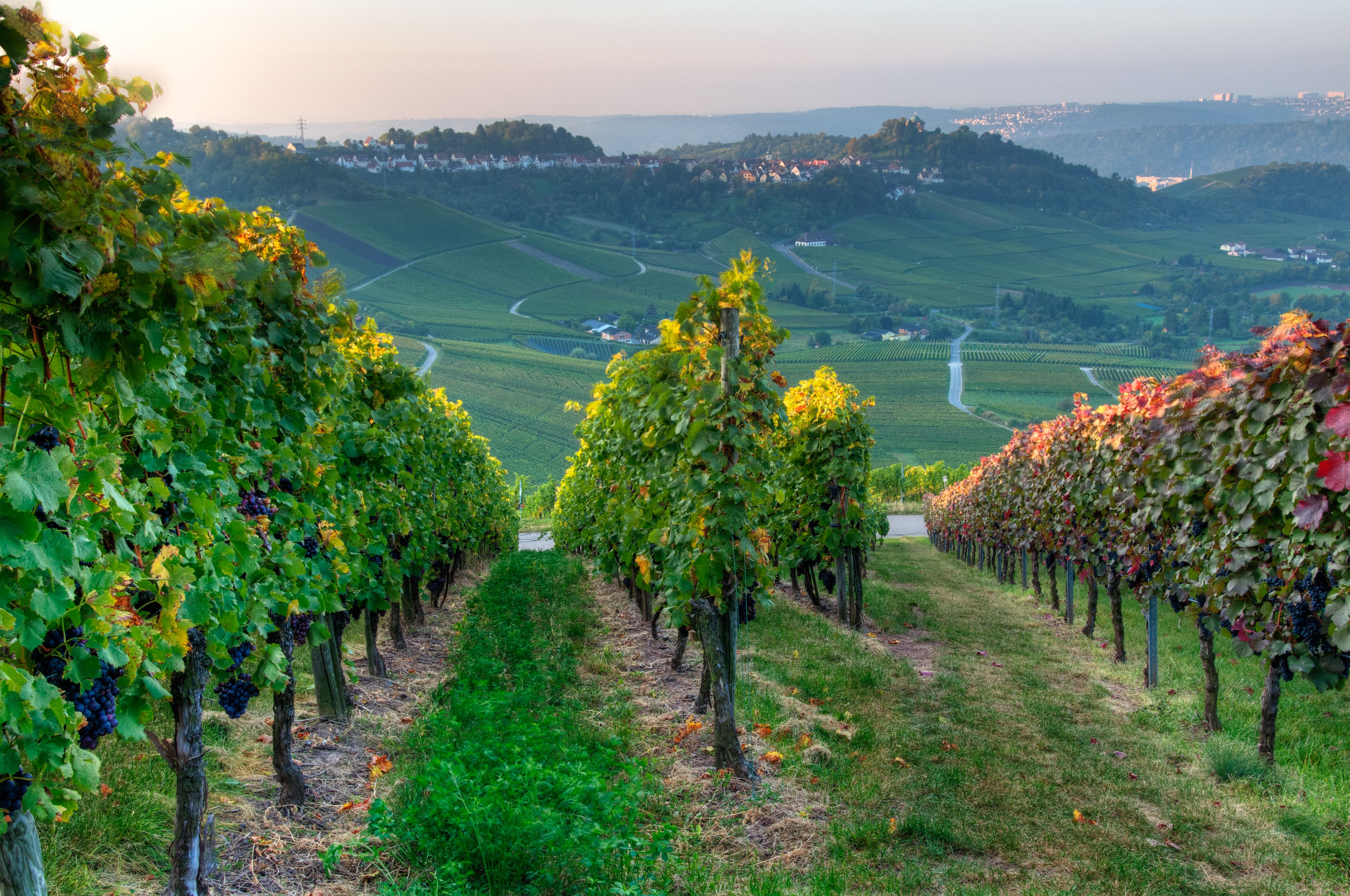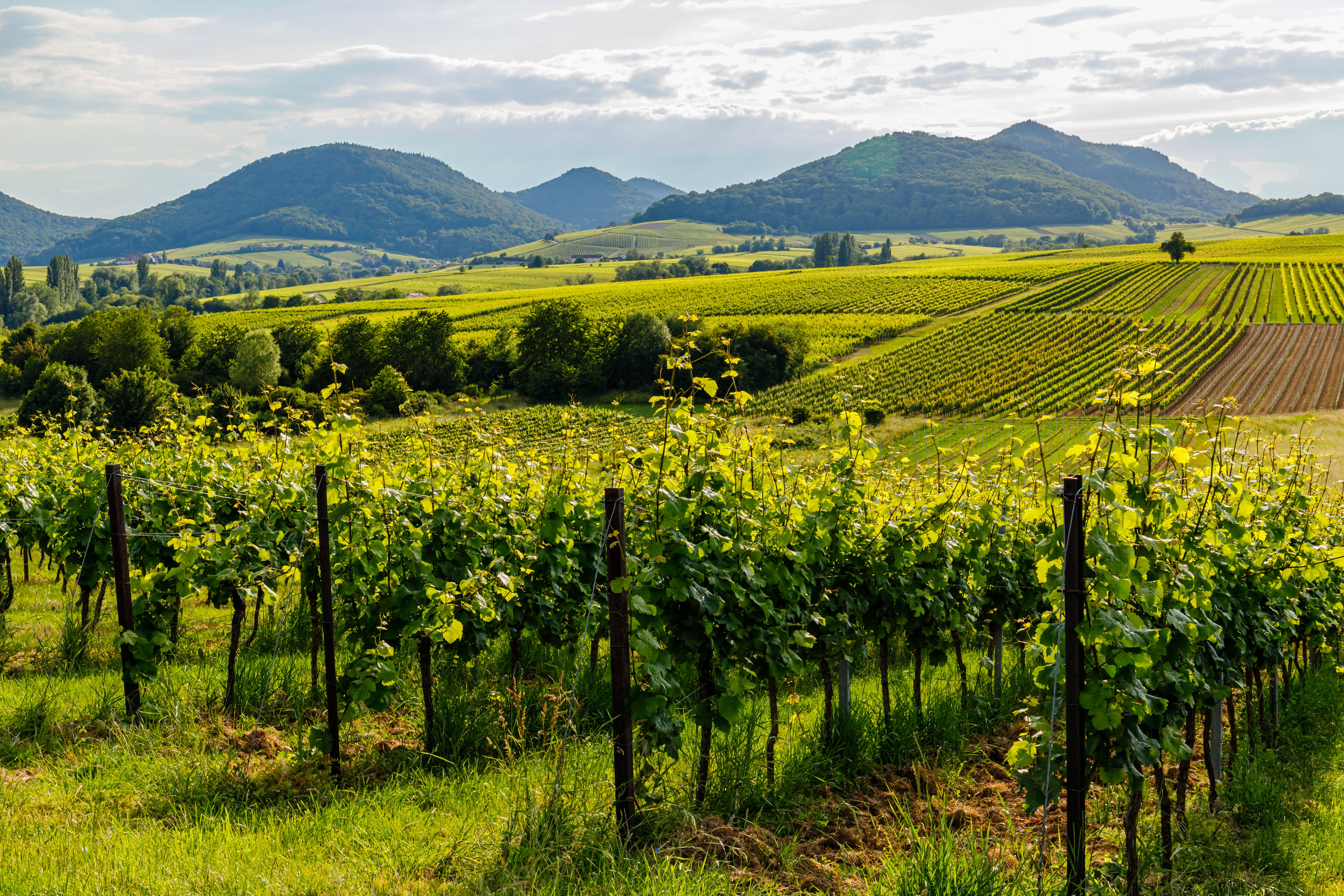Germany: The Cool-Climate Champion of Wine
Germany might not be the first country that springs to mind when you think of wine, but for those in the know, it’s one of the world’s most fascinating and rewarding wine-growing regions. With its dramatic river valleys, steep hillside vineyards, and centuries-old traditions, Germany is producing wines of exceptional finesse, purity, and age-worthiness, and it’s not just about Riesling anymore. Here’s what makes German wine worth exploring.
A Landscape Built for Wine
Germany’s wine regions are predominantly located in the country’s southwest, where the climate is moderated by rivers like the Rhine and Mosel, and where steep slopes provide optimal sun exposure and drainage. The cool climate plays a key role, allowing grapes to ripen slowly and develop vibrant acidity, a hallmark of German wines.
There are 13 official wine regions (Anbaugebiete), but the most famous include:
- Mosel – Iconic for its slate-rich slopes and delicately floral Rieslings.
- Rheingau – Home to some of Germany’s most historic and powerful Rieslings.
- Pfalz – Warmer and drier, producing generous Rieslings and exceptional Pinot Noir.
- Baden – Germany’s warmest region, known for its Burgundian-style reds and whites.
These regions vary not only in climate and soil but in wine styles, giving German wine remarkable diversity for such a compact country.
Famous For: Riesling — And Beyond
Germany is synonymous with Riesling, and rightly so. No other country grows it so widely or so well. German Rieslings can be:
- Bone-dry (Trocken) with razor-sharp acidity
- Lightly off-dry (Kabinett) — a beautiful entry point for new drinkers
- Lusciously sweet (Auslese, Eiswein) with intense fruit and honeyed depth
But there’s more to Germany than Riesling.
- Spätburgunder (Pinot Noir) thrives in regions like Ahr and Baden, offering elegance and bright red fruit — perfect for Burgundy lovers.
- Silvaner produces earthy, mineral-driven wines, particularly in Franken.
- Grauburgunder (Pinot Gris) and Weißburgunder (Pinot Blanc) are rising stars, especially in Pfalz and Baden.
Germany is also a pioneer in sustainable viticulture and a hub for innovative, quality-focused young winemakers redefining what German wine can be.
Why Drink German Wine?
1. Purity and Precision
German wines are incredibly expressive of their terroir, the soils, slopes, and climates they come from. You’ll find freshness, balance, and a sense of place in every bottle, whether it’s a crisp Riesling or a velvety Pinot Noir.
2. Versatility with Food
Thanks to their acidity, low alcohol, and range of styles, German wines are food-pairing powerhouses. Dry Riesling cuts through rich pork or fried dishes. Off-dry versions are magic with spicy Asian cuisine. And sweet styles are a dream with blue cheese or dessert.
3. Aged Gracefully
High-quality German wines, especially Rieslings, can age for decades, evolving into complex, layered expressions with notes of honey, stone fruit, and even petrol — a prized trait in mature bottles.
4. Value for Money
Even Germany’s top producers often offer better value than their counterparts in Burgundy or Champagne. You can find cellar-worthy wines at a fraction of the cost.
5. Something for Everyone
Whether you prefer dry or sweet, red or white, light or full-bodied, Germany has a wine for you. It’s an ideal region for both casual drinkers and seasoned collectors.
Final Pour
In short, Germany is a wine region that rewards curiosity. Its wines are fresh, expressive, and utterly drinkable, with stories in every bottle. Whether you’re pouring a crisp Mosel Riesling on a summer afternoon or opening a bold Baden Pinot with dinner, German wine always delivers quality, character, and a sense of tradition that runs deep.
Monthly Recommendations
· Joh Jos Prüm Wehlener Sonnenuhr Riesling Auslese 2022
· Bernhard Huber Malterdinger Pinot Noir 2021
· Gunderloch Nackenheim Rothenberg Spatlese 2019
· A.Christmann Gimmeldinger Biengarten Spatburgunder 2019
Time to raise a glass to Germany, one of the quiet greats of the wine world.




 Log in / Sign up
Log in / Sign up 


